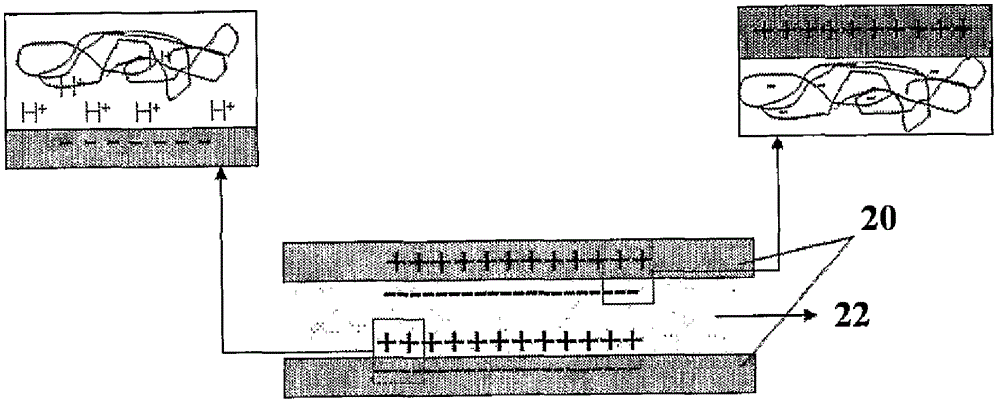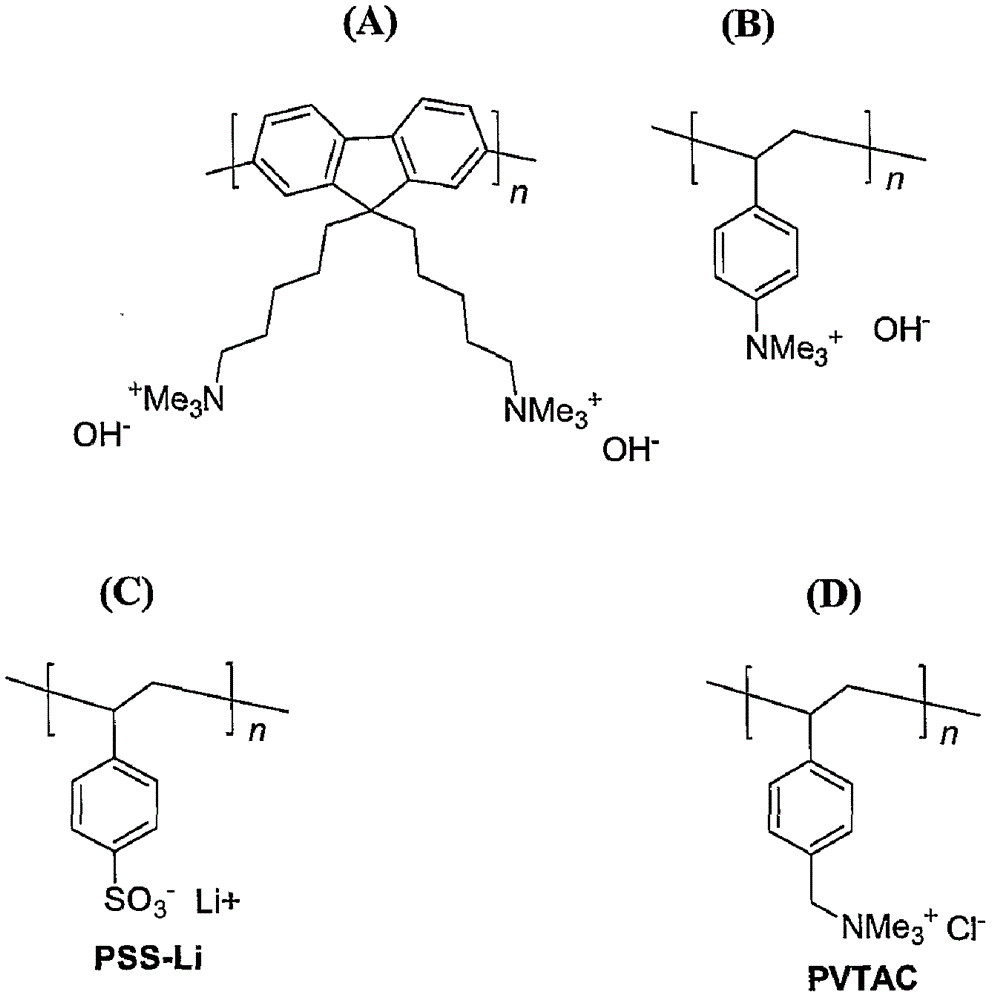Energy charge storage device using a printable polyelectrolyte as electrolyte material
A technology of charge storage and polyelectrolyte, applied in the field of electrochemistry, can solve problems that hinder the flexible printability of charge storage devices
- Summary
- Abstract
- Description
- Claims
- Application Information
AI Technical Summary
Problems solved by technology
Method used
Image
Examples
Embodiment
[0090] Production of polyelectrolyte-based electrolytes
[0091] Poly(styrenesulfonic acid) (PSSH) polymer electrolyte was prepared by adding 2 g of PSSH powder into 10 mL of deionized water at room temperature and subjected to ultrasonic bath sonication for 30 min to obtain a clear solution.
[0092] Subsequently, the clear solution was heated to 60°C in a Petri dish for 6 hours to obtain a polymer electrolyte membrane (0.6-0.8 mm thick) (see Image 6 ). The poly(styrenesulfonic acid) (PSSH) polyelectrolyte membrane acts as a separator between the two electrodes, preventing electrical shorting, and as an electrolyte, allowing ionic charge transfer.
[0093] Preparation of conventional electrolytes based on phosphoric acid and PVA
[0094] Polyvinyl alcohol (PVA) acidic polymer electrolyte was obtained by heating 5 g of polyvinyl alcohol (PVA) monomer (Alfa Aesar, 98–99%, medium / high molecular weight) in 50 mL of deionized water at 90 °C to obtain a clear gel colloidal solu...
PUM
| Property | Measurement | Unit |
|---|---|---|
| viscosity | aaaaa | aaaaa |
| thickness | aaaaa | aaaaa |
| thickness | aaaaa | aaaaa |
Abstract
Description
Claims
Application Information
 Login to View More
Login to View More - R&D
- Intellectual Property
- Life Sciences
- Materials
- Tech Scout
- Unparalleled Data Quality
- Higher Quality Content
- 60% Fewer Hallucinations
Browse by: Latest US Patents, China's latest patents, Technical Efficacy Thesaurus, Application Domain, Technology Topic, Popular Technical Reports.
© 2025 PatSnap. All rights reserved.Legal|Privacy policy|Modern Slavery Act Transparency Statement|Sitemap|About US| Contact US: help@patsnap.com



